Sponsorship Letter Template for Your Next Proposal
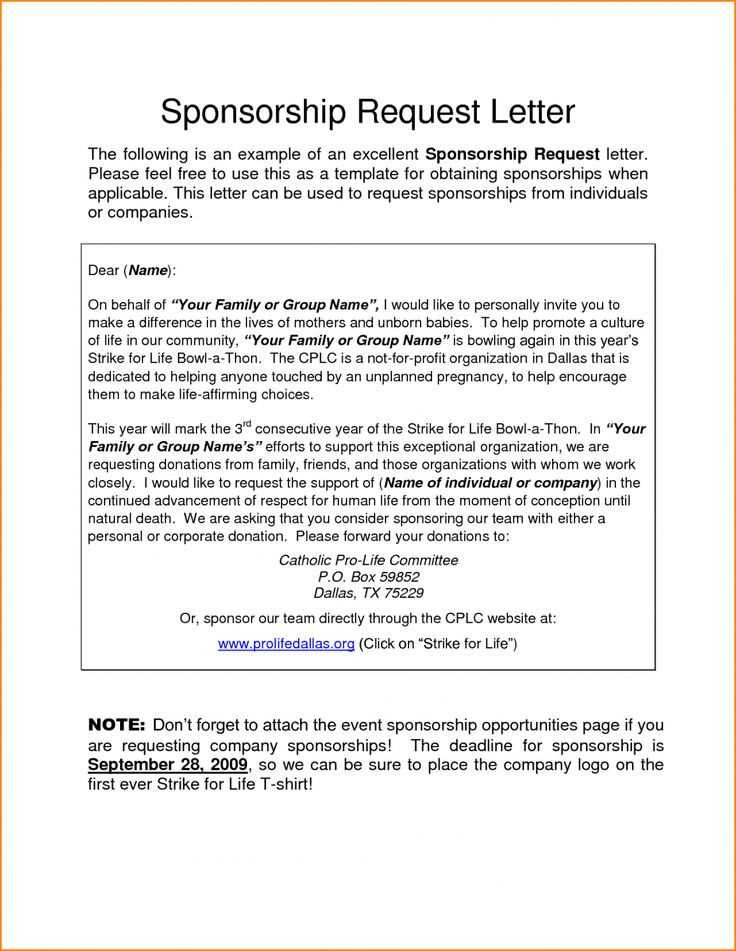
When seeking financial or resource backing for a project, crafting a compelling request is crucial. A well-structured appeal can make the difference between success and rejection. Knowing how to approach potential sponsors with a clear, persuasive message is an essential skill for anyone looking to secure support.
Key aspects of such a proposal include clarity in what you’re asking for, the benefits to the other party, and a professional tone that reflects your dedication. An impactful request shows that you value the sponsor’s time while demonstrating your project’s worth.
Understanding how to format and write such a communication increases the likelihood of a positive response. This guide will provide you with helpful advice on creating a strong, personalized document that will resonate with potential backers.
Understanding the Purpose of Sponsorship Letters
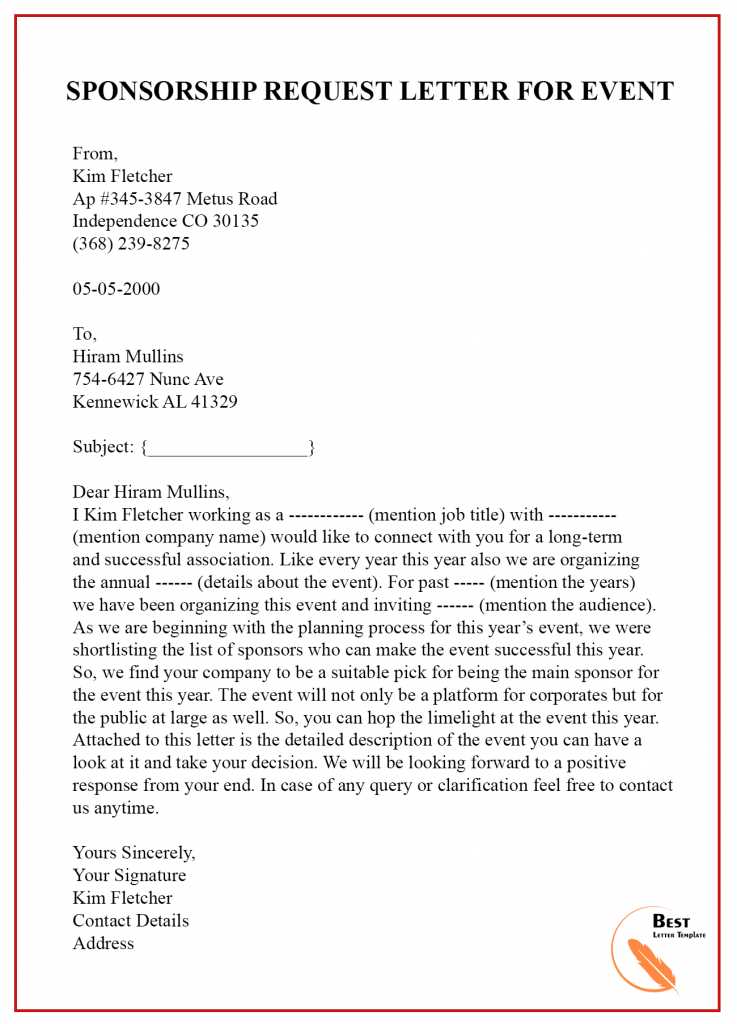
When seeking support for a project or event, a well-crafted communication is vital in conveying your needs and goals clearly. The aim is to establish a formal request that invites potential partners to get involved, while outlining how both parties can benefit from the collaboration.
Effective communication plays a critical role in building trust and showcasing the value of your proposal. By outlining what you are offering in exchange, you create a mutually beneficial relationship that encourages the other party to consider your request seriously.
The primary objective is to make it clear how the partnership aligns with both your interests and the interests of the person or organization you are approaching. A well-structured appeal ensures that your proposal stands out, giving you a better chance of receiving the support you need.
Essential Elements of an Effective Letter
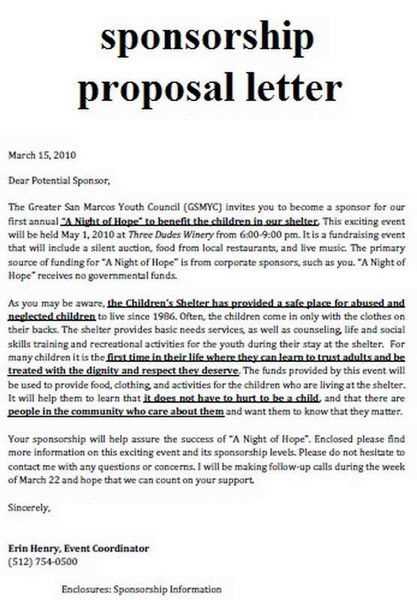
To successfully request backing for a project, the structure and content of your communication are crucial. The message must clearly convey your goals and needs, while also highlighting the value of the partnership. Ensuring that your proposal is clear, concise, and compelling is the key to engaging potential supporters.
Clarity and Focus
Start by being direct and clear about what you are asking for. Avoid unnecessary details or confusion. The recipient should understand exactly what is being requested and how they can contribute to your cause. A focused message increases the likelihood of a positive response.
Highlighting Mutual Benefits
To make your appeal compelling, emphasize the advantages for both parties. Show how the collaboration will provide value, not only for your project but also for the person or organization you are approaching. Demonstrating a mutual benefit builds a foundation for a strong, ongoing relationship.
How to Personalize Your Sponsorship Request
Making your proposal stand out requires tailoring it to the specific person or organization you are addressing. A generic message is unlikely to capture attention or generate interest. Personalization helps show that you’ve done your research and that you value the potential supporter’s unique qualities and goals.
Start by addressing the recipient by name and referencing any prior interactions or knowledge you have of their work. This makes your request feel less like a mass appeal and more like a genuine opportunity for collaboration. Additionally, customize the benefits section to align with their specific interests or business goals, highlighting how the partnership aligns with their values or needs.
Avoiding Common Mistakes in Proposals
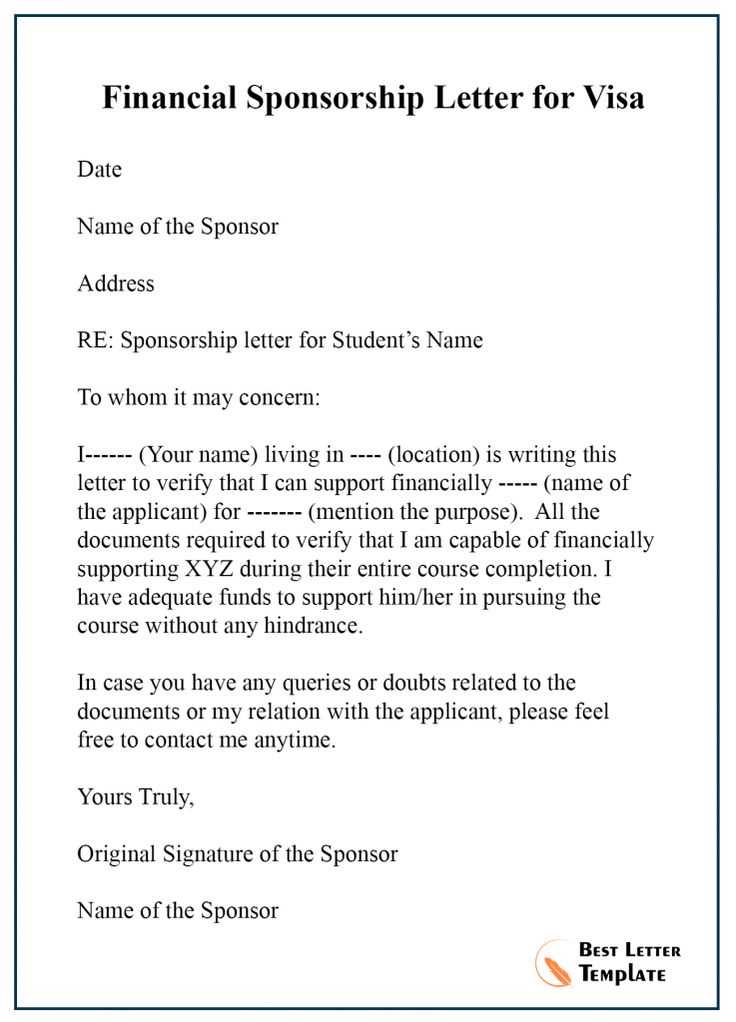
When creating a formal request for support, there are several pitfalls that can diminish the effectiveness of your communication. Avoiding these mistakes ensures that your message is clear, professional, and more likely to receive a positive response. Below are some of the most common errors to watch out for:
- Vague Requests: Be specific about what you need and how the recipient can help. A general appeal does not provide enough direction or incentive.
- Lack of Personalization: Sending a generic message can make it seem like you’re not invested in the relationship. Always tailor your communication to the individual or organization.
- Overly Complex Language: While professionalism is key, using overly technical or complicated language can alienate the reader. Keep your message simple and to the point.
- Failure to Highlight Benefits: It’s essential to clearly outline what’s in it for the recipient. Focusing only on your needs without showing mutual benefits can lead to rejection.
- Neglecting to Proofread: Spelling errors, grammar mistakes, or unclear sentences can make a proposal seem sloppy. Always take the time to review your work before sending it.
By avoiding these common mistakes, you increase the likelihood of building a strong, successful partnership with potential supporters.
Best Practices for Writing Persuasively
To effectively convince others to support your cause, it’s crucial to present your message in a compelling and logical manner. Persuasive writing is about connecting with your audience, building trust, and demonstrating the value of your proposal. Implementing a few best practices can help you craft a message that resonates and encourages action.
Appeal to Emotions and Logic
Striking the right balance between emotional appeal and logical reasoning is essential. Use storytelling techniques to engage the reader on an emotional level, but back up your claims with clear, rational arguments. This combination increases the likelihood of persuading your audience to consider your request seriously.
Maintain a Confident and Positive Tone
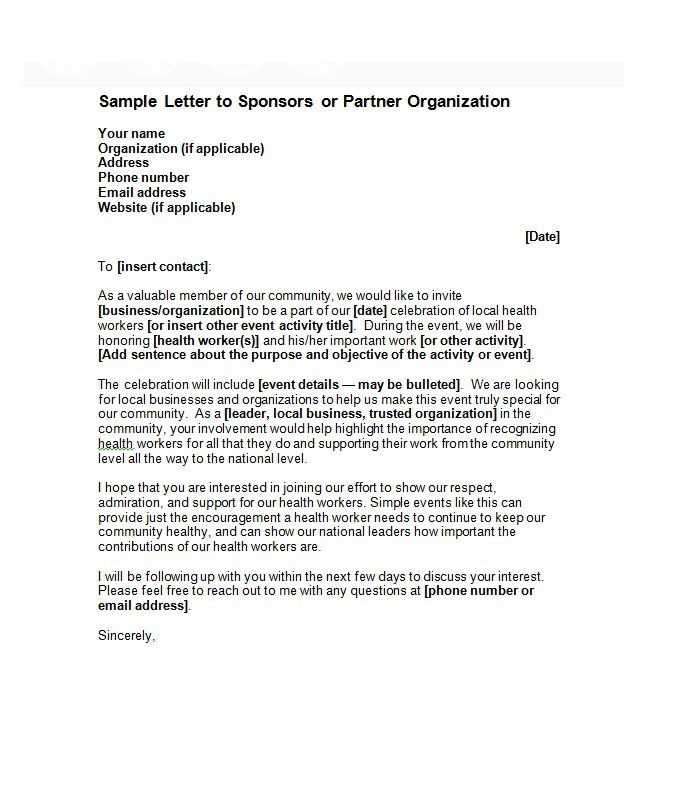
Your tone should be confident and optimistic without being pushy. Highlight the potential for success and the positive impact that supporting your project could bring. A positive, professional tone helps to establish credibility and fosters a sense of trust between you and the reader.
Examples of Successful Sponsorship Letters
Looking at real-world examples can provide valuable insights into how to effectively craft a compelling request for support. Successful appeals are typically clear, focused, and personalized to the recipient. They demonstrate the potential benefits for both parties, making it easier for the reader to see the value in the partnership.
Example 1: Request for Event Support
This type of communication clearly outlines the event’s goals, the target audience, and the benefits for the partner involved. By highlighting how the event aligns with the potential sponsor’s interests, the proposal becomes more relevant and persuasive. The message should also include a specific call to action, urging the recipient to engage and respond promptly.
Example 2: Partnership Proposal for a Community Initiative
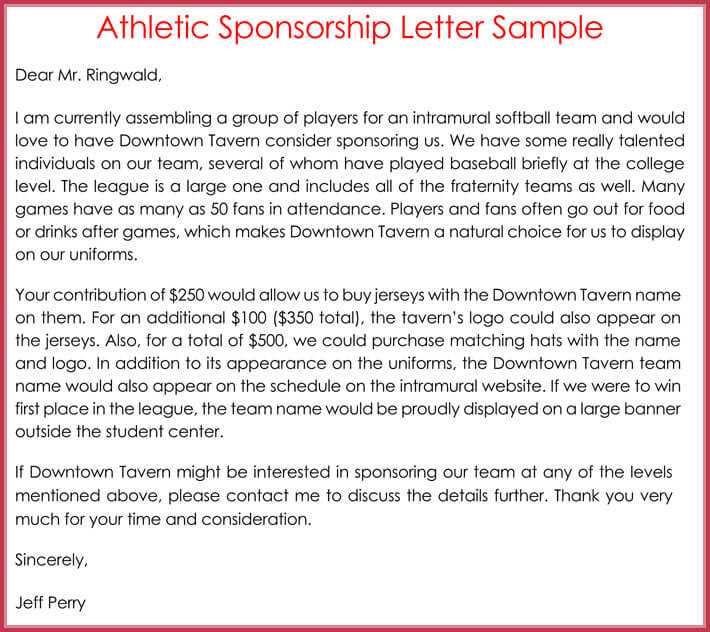
In this example, the focus is on the social impact and the long-term benefits for both parties. The message emphasizes shared values, such as community engagement or sustainability, and demonstrates how supporting the initiative can improve the sponsor’s brand image. A well-structured partnership proposal builds a foundation for ongoing collaboration.